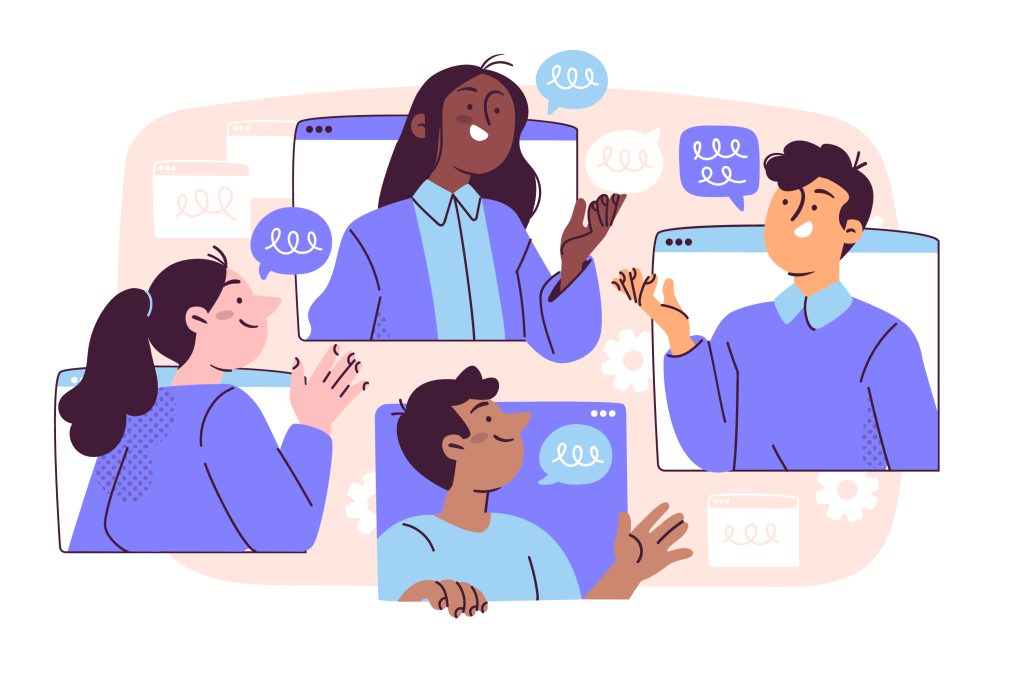
The Future of Virtual Meetings: Making Remote Work Accessible for Deaf Employees
- Posted by Cicada Sign
- Categories Blog
- Date September 3, 2024
- Comments 0 comment
Remote work has become a permanent fixture in today’s professional landscape, making virtual meetings an integral part of business operations. While this shift has provided flexibility and convenience, it has also posed significant challenges, particularly for Deaf and hard of hearing employees. Ensuring accessibility in virtual meetings is not only a matter of compliance but also an essential step towards fostering an inclusive workplace. In this blog post, we’ll explore the future of virtual meetings and how technology is making remote work more accessible for Deaf employees.
The Rise of Remote Work and Virtual Meetings
The COVID-19 pandemic accelerated the adoption of remote work, bringing virtual meetings to the forefront of business communication. Tools like Zoom, Microsoft Teams, and Google Meet have become essential platforms for collaboration. However, as businesses transitioned to these digital platforms, it quickly became evident that traditional meeting setups were not adequately accessible for everyone, particularly those in the Deaf community.
Challenges Faced by Deaf Employees in Virtual Meetings
Lack of Visual Cues: In virtual meetings, Deaf employees rely heavily on visual cues, such as lip-reading and sign language. Limited camera angles, poor lighting, and low-resolution video can hinder their ability to participate fully.
Inconsistent Captioning Services: While many virtual meeting platforms offer automated captioning services, the accuracy and reliability of these captions can vary greatly. Automated captions may struggle with certain accents, jargon, or rapid speech, leading to misunderstandings.
Inadequate Interpreter Access: Not all organizations provide sign language interpreters for virtual meetings, and those that do may face challenges in ensuring interpreters are visible and integrated into the meeting layout.
Communication Fatigue: Virtual meetings can be particularly exhausting for Deaf employees who have to focus intensely on interpreting visual cues, reading captions, or switching between multiple video feeds.
Technological Innovations Enhancing Accessibility
AI-Enhanced Captioning and Transcription: Recent advancements in artificial intelligence (AI) have significantly improved the accuracy of real-time captions and transcriptions. Tools like Otter.ai and Microsoft’s Azure Cognitive Services provide more reliable captioning by utilizing machine learning algorithms to better understand context and speech patterns.
Integrated Sign Language Interpretation: Platforms are now integrating sign language interpretation features, allowing interpreters to be pinned or highlighted during meetings. This ensures that Deaf employees can easily access and view interpreters throughout the session.
Customizable Meeting Layouts: Features that allow users to customize their meeting view are becoming more common. This includes options to adjust video sizes, arrange speakers in a grid format, or spotlight certain participants, making it easier for Deaf employees to follow the conversation.
Haptic Feedback Devices: Innovations like haptic feedback devices can provide tactile alerts for virtual meeting notifications, such as when someone raises their hand or a new speaker starts talking. These devices offer an additional layer of accessibility for Deaf employees.
Best Practices for Hosting Accessible Virtual Meetings
Enable Live Captions and Transcriptions: Always ensure that live captioning or transcription services are enabled for all meetings. Test these features beforehand to check their accuracy and reliability.
Provide Sign Language Interpreters: For meetings involving Deaf employees, arrange for a sign language interpreter and make sure they are prominently visible during the meeting.
Optimize Video Settings: Encourage participants to use good lighting, clear backgrounds, and proper camera positioning to enhance visibility. Request that speakers look directly at the camera when talking to aid lip-reading.
Use Clear and Simple Language: Avoid jargon or complex language that may be difficult for captioning services to transcribe accurately. Speak clearly and at a moderate pace.
Encourage Turn-Taking: To prevent overlapping conversations and ensure clarity, establish guidelines for turn-taking and hand-raising during the meeting.
Looking Ahead: The Future of Accessible Virtual Meetings
As remote work continues to evolve, so too will the technologies that support it. The future of virtual meetings will likely see more sophisticated AI tools, better integration of accessibility features, and increased awareness of the needs of Deaf employees. By prioritizing accessibility in virtual meetings, organizations can foster a more inclusive workplace, enabling all employees to participate fully and equally.

R Letter in ASL
"As remote work evolves, making virtual meetings accessible to Deaf employees is not just about compliance; it's about creating an inclusive environment where everyone can thrive."

"By leveraging advanced technologies and prioritizing accessibility, we can ensure that virtual meetings are a space where Deaf employees can participate fully and equally."



